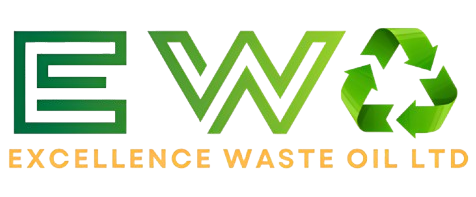In the fast-moving digital landscape, visibility isn’t just a matter of keywords and backlinks—it’s built on a solid technical foundation. That’s where a technical SEO audit service comes in. It’s not just a checklist of backend tweaks—it’s a full diagnostic of how well your website communicates with search engines, and whether it meets the technical standards Google and Bing expect.
If your site loads slowly, suffers from broken links, has poor mobile usability, or lacks proper indexing signals, your entire SEO marketing strategy plan could be undermined. Many businesses pour time and money into content and outreach, but overlook the critical technical groundwork needed to make all that effort visible.
A technical SEO audit service identifies and resolves issues like crawl errors, site architecture weaknesses, duplicate content, broken redirects, poor schema implementation, and sluggish load speeds. These factors don’t just affect rankings—they directly influence bounce rate, conversion, and user experience.
What Is a Technical SEO Audit Service?
A technical SEO audit service is a detailed analysis of a website’s technical infrastructure to identify issues that may hinder its visibility, usability, and performance in search engine results. While traditional SEO focuses on content and links, technical SEO zooms in on the backend mechanics of your website—what search engines see when they crawl and index your pages.
In short, it ensures your site is built in a way that allows search engines to understand, rank, and deliver it to users effectively.
Core Goals of a Technical SEO Audit
- Ensure Crawlability
Search engines use bots to crawl your site. If those bots hit dead ends, run into duplicate content, or can’t access your pages due to robots.txt errors or poor internal linking, your site’s visibility suffers. A technical audit checks every potential barrier to crawling. - Improve Indexability
It’s not enough for search engines to find your pages—they need to add them to their index. This means evaluating canonical tags, no index directives, and sitemap configurations to ensure pages are being indexed properly. - Fix Structural Issues
A poorly structured site confuses both users and search engines. Technical audits map out your site’s hierarchy, internal links, and navigation logic to make sure everything flows clearly and efficiently. - Boost Site Speed and Performance
Site speed is a known ranking factor. A comprehensive technical SEO audit service includes a deep performance scan to find what’s slowing your site down—whether it’s unoptimised images, bloated code, or excessive server response time. - Enhance Mobile Friendliness
With mobile-first indexing, a site’s mobile experience is now the default yardstick. Audits check how your site performs on mobile devices, including responsive design, font sizes, tap targets, and mobile load times. - Audit Security and HTTPS
Google gives priority to secure sites. Technical audits verify SSL implementation and check for mixed content issues that could weaken your site’s trust signals. - Validate Structured Data (Schema Markup)
Rich snippets and enhanced search listings rely on accurate schema markup. Technical audits assess whether your markup is valid, comprehensive, and implemented properly to improve visibility in SERPs.
What’s the Deliverable?
A quality technical SEO audit service results in a detailed, prioritised report. It identifies:
- Issues found
- Severity level (critical, warning, informational)
- Recommended fixes
- Tools and references
- Implementation strategy
- Before/after performance benchmarks (where possible)
It’s not just a list of faults—it’s a strategic guide to recovery and growth.
Why Technical SEO Matters More Than Ever in 2025
Search engine algorithms have evolved dramatically, but one principle remains constant: technical soundness is non-negotiable. As the digital space becomes more competitive, and as Google’s algorithms get smarter, technical SEO is no longer just for large-scale websites—it’s essential for any business that wants to grow online.
The Shift to Experience-Driven SEO
Google’s ranking systems now place enormous weight on user experience signals—Core Web Vitals, mobile usability, HTTPS, and more. If your website fails technically, your rankings won’t hold, no matter how strong your content is.
A professional technical SEO audit service aligns your website with these algorithmic expectations by optimising speed, responsiveness, structure, and stability—things users may not consciously notice but search engines absolutely do.
The Mobile-First Imperative
Since Google fully rolled out mobile-first indexing, your mobile site is now your primary site in the eyes of the algorithm. If your mobile experience is glitchy, slow, or poorly structured, you’re bleeding ranking potential.
A proper mobile SEO audit, often included within a full technical audit, identifies whether your site delivers on smaller screens and whether mobile content matches the desktop equivalent.
Search Engines Are Less Forgiving
In 2025, SEO is no longer about gaming the system. Google’s systems, powered by AI and deep learning, can recognise quality—and technical deficiencies—at scale. From server response errors to misplaced canonical tags, small technical flaws are now magnified by the algorithm.
But technical SEO is only one piece of the puzzle. With the rise of conversational AI and mobile-first indexing, businesses must also optimise for how users speak, not just how they type. Voice search is reshaping content strategy, keyword planning, and user experience. To stay ahead, explore our guide: Voice Search SEO: 9 Practical Tips for Businesses — a must-read for brands looking to future-proof their visibility
Your Competitors Are Investing in Technical SEO
You might have better content. You might have a stronger brand. But if a competitor’s site loads faster, indexes cleaner, and offers smoother performance, it may outrank you regardless.
A technical SEO audit service ensures your site doesn’t lose ground due to avoidable technical gaps. It’s a strategic defence—and a major offensive move.
It’s Foundational, Not Optional
You wouldn’t build a house on a cracked foundation. The same goes for your digital presence. Content strategy, keyword planning, backlinks, paid campaigns—all rely on the technical foundation of your website.
Without regular audits, even a high-ranking site can quietly degrade over time due to:
- Broken internal links
- Expired redirects
- Schema errors
- JavaScript rendering issues
- Outdated sitemap files
These issues are silent killers. Only a structured, professional technical SEO audit service can expose them in time to prevent long-term damage.
What’s Included in a Full Technical SEO Audit?
A comprehensive technical SEO audit service goes far beyond a surface-level scan. It evaluates every technical element that can impact search visibility, crawl efficiency, and user experience. When done right, it reveals both critical issues and untapped opportunities.
Here’s what a proper technical audit should include:
1. Site Crawl and Indexability Review
- Crawlability Analysis: Identifies whether search engine bots can access and read all the pages that matter.
- Robots.txt Review: Checks for disallow rules that might block key areas of your site unintentionally.
- XML Sitemap Assessment: Validates that your sitemap is properly structured, submitted, and includes up-to-date URLs.
- Index Status Checks: Looks at which pages are currently indexed and flags pages with noindex, canonical conflicts, or index bloat.
Why It Matters:
If your pages aren’t crawlable or indexed correctly, they can’t rank—no matter how good the content is.
2. Site Structure and Internal Linking Audit
- URL Structure: Ensures URLs are clean, keyword-relevant, and consistent.
- Navigation & Menu Architecture: Evaluates if your site hierarchy flows logically for both users and search engines.
- Breadcrumbs and Category Pages: Reviews navigational aids for usability and SEO benefits.
- Orphan Pages Detection: Identifies pages with no internal links pointing to them—these often get ignored by crawlers.
Why It Matters:
Clear internal structure strengthens crawl flow, distributes link equity, and boosts ranking potential for deeper pages.
3. Speed and Performance Testing
- Core Web Vitals Audit: Measures key performance metrics like Largest Contentful Paint (LCP), First Input Delay (FID), and Cumulative Layout Shift (CLS).
- PageSpeed Insights and Lighthouse Reports: Flags bottlenecks in performance at both mobile and desktop levels.
- Image & Asset Optimisation: Reviews image compression, lazy loading, and asset caching.
- Third-Party Script Impact: Assesses how external scripts are affecting your site’s loading speed.
Why It Matters:
Site speed is directly tied to bounce rate, user experience, and Google rankings. A sluggish site costs traffic and trust.
4. Mobile SEO Audit
- Mobile Usability Checks: Validates responsive design, proper scaling, and interaction on touch devices.
- Viewport Configuration: Ensures your site renders correctly across different screen sizes.
- Font Size & Tap Target Tests: Identifies design issues that may hinder mobile accessibility.
Why It Matters:
With mobile-first indexing, your mobile site determines your desktop rankings. Any mobile issues drag down your whole SEO performance.
5. HTTPS and Site Security Review
- SSL Certificate Validation: Checks for proper HTTPS implementation across the site.
- Mixed Content Detection: Finds pages that load both secure and non-secure elements.
- Security Headers: Evaluates protection measures like Content Security Policy and X-Frame-Options.
Why It Matters:
Secure sites not only earn better rankings, they build trust with users—essential for conversion and credibility.
6. Technical Error and Redirect Analysis
- Broken Links and 404 Pages: Flags dead-end links and unhelpful error pages.
- Redirect Chain and Loop Identification: Simplifies excessive redirect patterns that waste crawl budget.
- Server Response Code Checks: Verifies all URLs return the appropriate status (200, 301, 302, etc.).
Why It Matters:
Technical errors degrade crawl efficiency, confuse bots, and frustrate users. Redirect issues in particular can dilute link equity and slow down indexing.
7. Structured Data & Schema Markup Evaluation
- Schema Validation: Uses tools like Google’s Rich Results Test to check markup quality.
- Coverage Checks: Ensures product, article, review, local business, and FAQ schema are correctly implemented where relevant.
- Fixes for Errors & Warnings: Identifies areas where schema is misconfigured or missing critical fields.
Why It Matters:
Correct schema increases the chance of rich results, which improve visibility and click-through rates in search listings.
8. Duplicate Content and Canonicalisation Review
- Canonical Tag Checks: Verifies that each page has a clear canonical version to avoid content duplication.
- URL Parameter Handling: Identifies pages duplicated due to query strings or sorting filters.
- Content Fingerprinting: Uses similarity checks to find near-identical pages that could confuse search engines.
Why It Matters:
Duplicate content splits your ranking signals and risks Google de-prioritising your pages.
9. Technical SEO Tools and Logs Analysis
- Google Search Console Integration: Pulls in crawl stats, coverage errors, and indexation trends.
- Server Log File Analysis: Tracks how bots are crawling your site and identifies ignored or over-crawled areas.
- Audit Software Outputs: Leverages tools like Screaming Frog, Sitebulb, Ahrefs, or SEMrush for deeper insight.
Why It Matters:
Technical SEO isn’t guesswork. Solid data from trusted tools helps prioritise fixes and track improvement.
10. Actionable Recommendations and Roadmap
Every technical SEO audit service should conclude with a tailored action plan, clearly listing:
- What to fix
- Why it matters
- How to fix it (or who should)
- Estimated effort or priority level
This bridges the gap between data and implementation—turning the audit into meaningful results.
How Technical SEO Audits Are Performed: Tools and Methodology

A well-executed technical SEO audit service blends human expertise with the precision of advanced tools. The process is data-driven, but it’s not just about producing spreadsheets—it’s about interpreting signals, spotting patterns, and understanding what those patterns mean for real-world performance.
Here’s how an expert-led audit typically unfolds:
1. Initial Scoping and Goals Definition
Before diving into code or crawling tools, the process begins with discovery:
- What are your core business goals?
- What is your current SEO status?
- What platforms or CMS do you use (e.g. WordPress, Shopify, Magento)?
- Are there any known performance issues or penalties?
Why It Matters:
This ensures the audit focuses on business-critical areas and aligns with your growth strategy.
2. Full Site Crawl Using Audit Tools
Tools like Screaming Frog, Sitebulb, and Ahrefs perform an extensive crawl of your site to surface technical issues:
- Meta tags and headers
- Status codes
- Canonicals
- Internal linking
- Redirect chains
- JavaScript rendering
- Pagination handling
This is often paired with custom scripts or crawl limit configurations for large or complex websites.
3. Google Search Console & Bing Webmaster Analysis
An audit incorporates real-world search data from:
- Index Coverage Reports
- Mobile Usability Reports
- Page Experience Insights
- Manual Actions
- Sitemaps
- Crawl Stats
Why It Matters:
These tools show how Google actually sees your site, not just what it’s supposed to see.
4. Log File Analysis (Optional for Advanced Sites)
For high-traffic or enterprise-level sites, raw server log files are invaluable. They reveal:
- Which pages search engine bots visit most frequently
- Crawl frequency by bot
- Crawl anomalies or dead zones
Why It Matters:
Crawl budget is a real constraint. Logs show if bots are wasting time on low-value URLs.
5. Speed Testing and Core Web Vitals Review
Using tools like:
- Google Lighthouse
- PageSpeed Insights
- GTmetrix
- WebPageTest
Performance tests simulate how real users experience your site. Reports flag layout shifts, blocking resources, large contentful paint delays, and more.
6. Mobile-First Testing
- Mobile-Friendly Test (Google)
- Viewport emulator checks
- Manual checks on real devices when needed
This phase ensures that mobile usability isn’t costing you traffic or rankings.
7. Schema and Rich Results Validation
Structured data is tested through:
- Google’s Rich Results Test
- Schema.org Validator
- Site-specific rendering checks
Common issues like missing required fields, duplicated schemas, or incorrect nesting are identified and corrected.
8. Content Duplication & Canonical Review
Using tools like:
- Siteliner
- Copyscape
- OnCrawl
This step reviews:
- Whether duplicate content exists
- If canonical tags are working as intended
- Whether content syndication or multilingual structures cause index confusion
9. Security and HTTPS Verification
Security settings are verified using:
- SSL Labs tests
- Mixed content scans
- Manual inspection of certificate chains and browser warnings
10. Compilation and Prioritisation of Findings
Each issue is assigned:
- A severity rating (Critical, High, Medium, Low)
- Recommended next steps
- Implementation tips (based on your CMS or platform)
- Impact expectations
A good technical SEO audit service doesn’t overwhelm—it simplifies complex problems into a clear, fix-first roadmap.
Common Technical SEO Issues Found During Audits (and How to Fix Them)
A thorough technical SEO audit service almost always uncovers a blend of critical and less urgent issues. These problems can silently affect visibility, crawl efficiency, rankings, and user experience. Below are some of the most common culprits—along with how they’re typically resolved.
1. Broken Internal Links
What It Is:
Links on your site that lead to pages that no longer exist or return 404 errors.
Why It Matters:
Broken links waste crawl budget, damage user experience, and dilute authority.
How to Fix It:
- Use tools like Screaming Frog or Ahrefs to find broken links.
- Update or remove broken URLs.
- Implement redirects if the content has moved.
2. Improper Redirects or Redirect Chains
What It Is:
Multiple consecutive redirects before reaching the final page, or redirect loops.
Why It Matters:
Redirect chains slow down page load, weaken link equity, and confuse bots.
How to Fix It:
- Minimise to a single 301 redirect where necessary.
- Avoid temporary 302s unless intentional.
- Always test redirects with a status code checker.
3. Slow Load Times
What It Is:
Pages taking longer than 2–3 seconds to load on mobile or desktop.
Why It Matters:
Speed is a direct ranking factor. Slow sites frustrate users and increase bounce rate.
How to Fix It:
- Compress images and enable lazy loading.
- Minimise JavaScript and CSS.
- Enable browser caching and use a CDN.
- Implement server-side improvements like GZIP compression.
4. Mobile Usability Errors
What It Is:
Design flaws that make it hard for mobile users to interact with your site.
Why It Matters:
Google uses mobile-first indexing, so mobile usability affects rankings across all devices.
How to Fix It:
- Ensure responsive design.
- Increase font size and button spacing.
- Set correct viewport tags.
- Avoid horizontal scrolling and unplayable content.
5. Thin or Duplicate Content
What It Is:
Pages with little original content or near-identical copies across the site.
Why It Matters:
Duplicate content confuses search engines and splits ranking signals.
How to Fix It:
- Use canonical tags where duplication is unavoidable.
- Consolidate similar pages.
- Rewrite thin pages to include unique, valuable content.
6. Unoptimised URL Structures
What It Is:
URLs with unnecessary parameters, inconsistent formatting, or unclear hierarchy.
Why It Matters:
Poor URLs hinder crawling and dilute keyword relevance.
How to Fix It:
- Use simple, hyphen-separated, keyword-relevant slugs.
- Avoid underscores, session IDs, or redundant folders.
- Implement redirects for cleaned URLs where needed.
7. Misconfigured Robots.txt or Meta Tags
What It Is:
Pages accidentally blocked from crawling or indexing.
Why It Matters:
If important pages are blocked, they can’t rank.
How to Fix It:
- Check robots.txt and ensure only non-essential URLs are disallowed.
- Audit noindex, nofollow, and canonical directives.
- Use Google Search Console to identify affected pages.
8. Missing or Broken Structured Data
What It Is:
Incomplete, invalid, or misapplied schema markup.
Why It Matters:
Without structured data, your pages won’t qualify for rich results.
How to Fix It:
- Use Google’s Rich Results Test to identify problems.
- Apply proper schema types (e.g. Article, Product, FAQ).
- Follow the latest guidelines on Schema.org.
9. Index Bloat
What It Is:
Too many low-value pages being indexed by search engines.
Why It Matters:
It dilutes your site’s authority and can overwhelm crawl budgets.
How to Fix It:
- Use noindex on low-value pages like filters, tags, and outdated content.
- Consolidate paginated or duplicate content.
- Regularly review indexed pages in Google Search Console.
10. Sitemap Errors
What It Is:
Outdated or invalid XML sitemaps with broken links or non-canonical URLs.
Why It Matters:
Search engines rely on sitemaps to find and prioritise content.
How to Fix It:
- Regenerate your sitemap automatically (if CMS allows).
- Ensure only canonical, indexable URLs are listed.
- Resubmit updated sitemaps via Search Console.
11. Excessive JavaScript Rendering Issues
What It Is:
Pages that rely heavily on JavaScript to load content.
Why It Matters:
If content is not rendered on the first load, bots might not see it.
How to Fix It:
- Use server-side rendering or dynamic rendering.
- Reduce JS complexity and loading time.
- Defer non-essential scripts.
Frequently Asked Questions
What is a technical SEO audit service?
A technical SEO audit service is a professional examination of your website’s technical infrastructure to ensure it is fully optimised for search engine crawling, indexing, and ranking. It focuses on elements such as page speed, mobile usability, security, site architecture, structured data, and more. Unlike a content or backlink audit, a technical SEO audit service addresses the behind-the-scenes factors that determine how well your site performs in search engine results.
Why is a technical SEO audit service important for website success?
Because even the best content cannot rank well if your website is technically flawed. A technical SEO audit service uncovers issues that could be preventing search engines from accessing or understanding your site properly. From crawl errors and broken links to schema markup and load speed, every technical weakness is a barrier to organic visibility. Regular technical audits ensure your website remains search-friendly, fast, and fully indexable—giving your content the best chance to succeed.
How often should I get a technical SEO audit service?
Ideally, a technical SEO audit service should be performed:
- Quarterly for large or frequently updated websites.
- Bi-annually for small to medium sites.
- Immediately after a website migration, major redesign, or CMS upgrade.
If you notice a sudden drop in traffic, crawl rate issues in Google Search Console, or ranking stagnation, that’s a strong indicator that your site needs a fresh technical audit.
Can I perform a technical SEO audit myself?
Yes, to some extent. Basic issues can be identified using tools like Google Search Console, Screaming Frog, or PageSpeed Insights. However, a professional technical SEO audit service goes far deeper. It identifies issues that automated tools alone can’t fully interpret—like log file analysis, complex canonical conflicts, render-blocking scripts, or schema nesting errors. The expertise behind the audit is often what makes the biggest difference.
What’s the difference between a technical SEO audit and a regular SEO audit?
A technical SEO audit service specifically focuses on the performance, accessibility, and crawlability of your website—its core infrastructure. A regular SEO audit, by contrast, may include technical factors but will also look at keyword optimisation, content quality, backlink profiles, and UX signals.
For example:
- A technical SEO audit service finds that your sitemap is broken.
- A regular SEO audit finds that your product descriptions lack targeted keywords.
Both are essential, but the technical audit lays the groundwork on which everything else depends.
What tools are used in a technical SEO audit service?
Professionals offering a technical SEO audit service use a suite of tools to diagnose and prioritise issues, including:
- Screaming Frog SEO Spider
- Sitebulb
- Google Search Console
- Google PageSpeed Insights
- GTmetrix
- WebPageTest
- Ahrefs or SEMrush (for additional insight)
- Schema.org Validator
- Google’s Rich Results Test
- Server log file analysis tools
Each tool provides a different piece of the puzzle, and expert interpretation ties the findings into actionable strategy.
How long does a technical SEO audit take?
The duration of a technical SEO audit service depends on the size and complexity of your website. Generally:
- Small sites (under 100 pages): 3–5 business days
- Medium sites (100–1,000 pages): 1–2 weeks
- Large or enterprise sites: 2–4 weeks, including log analysis and testing
The deliverable includes a detailed report, prioritised fixes, and optional implementation support depending on your provider.
Will a technical SEO audit improve my rankings?
A technical SEO audit service by itself doesn’t “guarantee” rankings—but it removes the technical roadblocks that may be suppressing your organic performance. In many cases, resolving crawl errors, speeding up pages, fixing redirects, and cleaning up schema can lead to measurable increases in traffic and rankings within weeks. Combined with strong content and backlink efforts, technical SEO creates the foundation for sustainable growth.
What happens after a technical SEO audit?
After the technical SEO audit service is completed, you receive:
- A prioritised issue list
- Detailed explanations of each problem
- Fix recommendations
- Optional implementation help (if offered by the provider)
Some providers also include a follow-up mini-audit 30–60 days later to confirm fixes and track improvements.
How do I choose a good technical SEO audit service provider?
Look for a provider who:
- Has proven experience in technical SEO
- Uses industry-leading tools
- Offers customised reports, not automated exports
- Can explain technical issues in business terms
- Provides strategic guidance, not just diagnostics
At Smart Digitants, our technical SEO audit service is designed for clarity, accuracy, and long-term impact—not quick fixes or generic templates.
Our Content Writing Team at Smart Digitants is a group of dedicated professionals, passionate about creating high-quality, engaging content.
- What Is a Technical SEO Audit Service?
- Why Technical SEO Matters More Than Ever in 2025
- What’s Included in a Full Technical SEO Audit?
- 1. Site Crawl and Indexability Review
- 2. Site Structure and Internal Linking Audit
- 3. Speed and Performance Testing
- 4. Mobile SEO Audit
- 5. HTTPS and Site Security Review
- 6. Technical Error and Redirect Analysis
- 7. Structured Data & Schema Markup Evaluation
- 8. Duplicate Content and Canonicalisation Review
- 9. Technical SEO Tools and Logs Analysis
- 10. Actionable Recommendations and Roadmap
- How Technical SEO Audits Are Performed: Tools and Methodology
- 1. Initial Scoping and Goals Definition
- 2. Full Site Crawl Using Audit Tools
- 3. Google Search Console & Bing Webmaster Analysis
- 4. Log File Analysis (Optional for Advanced Sites)
- 5. Speed Testing and Core Web Vitals Review
- 6. Mobile-First Testing
- 7. Schema and Rich Results Validation
- 8. Content Duplication & Canonical Review
- 9. Security and HTTPS Verification
- 10. Compilation and Prioritisation of Findings
- Common Technical SEO Issues Found During Audits (and How to Fix Them)
- 1. Broken Internal Links
- 2. Improper Redirects or Redirect Chains
- 3. Slow Load Times
- 4. Mobile Usability Errors
- 5. Thin or Duplicate Content
- 6. Unoptimised URL Structures
- 7. Misconfigured Robots.txt or Meta Tags
- 8. Missing or Broken Structured Data
- 9. Index Bloat
- 10. Sitemap Errors
- 11. Excessive JavaScript Rendering Issues
- Frequently Asked Questions
- What is a technical SEO audit service?
- Why is a technical SEO audit service important for website success?
- How often should I get a technical SEO audit service?
- Can I perform a technical SEO audit myself?
- What’s the difference between a technical SEO audit and a regular SEO audit?
- What tools are used in a technical SEO audit service?
- How long does a technical SEO audit take?
- Will a technical SEO audit improve my rankings?
- What happens after a technical SEO audit?
- How do I choose a good technical SEO audit service provider?










